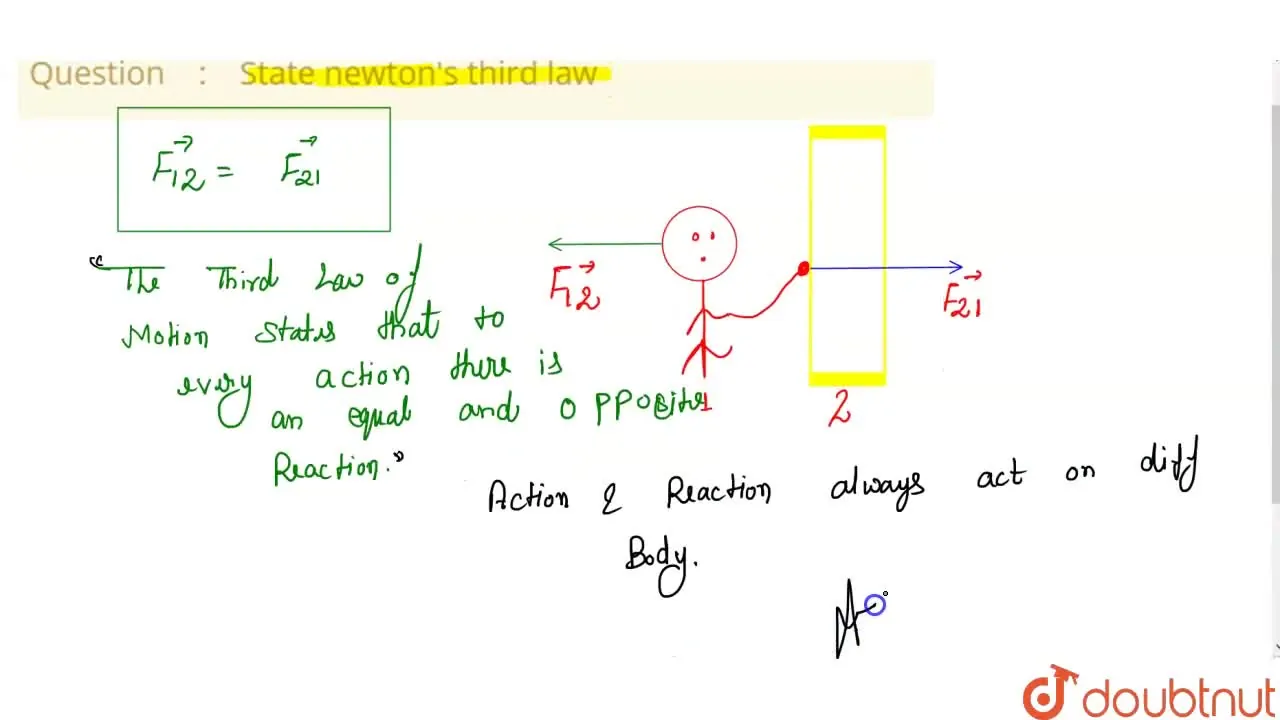State newton's third law Solution in Tamil
Video Solution
Text Solution
For every action, there is an equal and oppsite reaction. They always act on two different bodies..
"The force acting on a body is directly proportional to the rate of change of linear momentum of the body and the change in momentum takes place in the direction of the force ".
Let, .m. be the mass of a moving body, moving along a straight line with an initial speed .u.. After a time interval of .t. , the velocity of the body changes to .v. due to the impact of an unbalanced external force F.
Initial momentum of the body Pi=mu
Final momentum of the body Pf=mv
Change in momentum Δp=Pf−Pi
=mv−mu
By Newton.s second law of motion.
Force , F∝ rate of change of momentum
F∝ change in momentum/time
F∝mv−mut
F=km(v−u)t
Here, k is the proportionality constant k = 1 in all system of units. Hence,
F=m(v−u)t
Since, acceleration = change in velocity/time, a=(v−u)t. Hence, we have
F=m×a
Force = mass × acceleration
(i) No external force is required to maintain the motion of a body moving with uniform velocity.
(ii) When the net force acting on a body is not equal to zero, then definitely the velocity of the body will change .
(iii) Thus, change in momentum takes place in the direction of the force. The change may take place either in magnitude or in direction or in both.
|
Updated on:21/07/2023
Related Playlists
Similar Questions
Give the applications of universal law gravitation .
05:13View SolutionWhat is refractive index ?
03:52View SolutionWith the help of a circuit diagram derive the formula for the resultant resistance of three resistances connected in series.
04:39View SolutionNEWTON'S THIRD LAW OF MOTION
03:04View SolutionNEWTON'S THIRD LAW OF MOTION
03:04View SolutionState Newton's third law of motion and principle of conservation of momentum.
02:25View SolutionState newton's third law
02:25View SolutionState newton's third law
06:28View SolutionAccording to Newton's third law,
03:18View SolutionAccording to Newton's third law,
02:05View SolutionState Newton's third law. Explain it with three examples.
01:10View SolutionState and explain Newton's third Law of motion.
43:52View SolutionFind the Odd word out: Newton's first law,Newton's law of gravity,Newton's third law,Newton's second law
01:41View SolutionState the importance of Newton's third law of motion.
01:16View SolutionNewton's third Law
01:30View Solution


